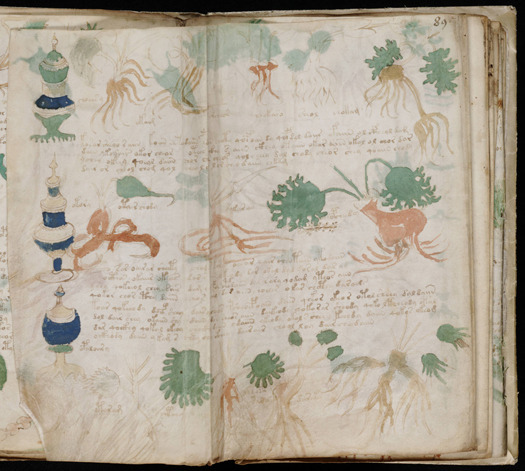

- #High resolution voynich manuscript update#
- #High resolution voynich manuscript code#
- #High resolution voynich manuscript crack#
It's used in loads of things that you interact with every day, including Amazon's Alexa. Natural language processing focuses on training computers to manipulate human language and relies on machine learning algorithms and neural networks. John Doe (his real name), chief scientist at Mind AI, an artificial intelligence company in South Korea, wrote in a Medium post that there's a vast difference between natural language processing, a subset of artificial intelligence, and what he calls "natural language reasoning." The opposite is true, in fact: It shows us that artificial intelligence has difficulty in fully understanding the complexities of human language, which is actually sort of refreshing.
#High resolution voynich manuscript crack#
It isn't exactly fair to assume that just because AI can't crack the Voynich manuscript, it isn't valuable. That's convenient, given that it allows for more freedom in interpreting the text That means they don't really know if the text was in Hebrew.įinally, Kondrak and Hauer assumed the manuscript was an anagram, meaning the letters in each word have been scrambled. The only problem? Everyone thought he was nuts.Īnother issue: While the algorithms could produce suggestions for source languages of the texts, they couldn't evaluate the likelihood of each match. The abbreviations correspond to the standard pattern of words used in the Herbarium Apuleius Platonicus – aq = aqua (water), dq = decoque / decoctio (decoction), con = confundo (mix), ris = radacis / radix (root), s aiij = seminis ana iij (3 grains each), etc." Gibbs writes: "From the herbarium incorporated into the Voynich manuscript, a standard pattern of abbreviations and ligatures emerged from each plant entry.
#High resolution voynich manuscript code#
In essence, he said the Voynich manuscript wasn't translated from a language into a code (which is the prevailing thought, to this day), but rather, it was shorthand. In September 2017, history researcher and television writer Nicholas Gibbs published research in the Times Literary Supplement, claiming he had figured out the text included "tell-tale signs of an abbreviated Latin format." Gibbs said the collection was a guide to women's health and it had been plagiarized from other similar writings during the same period.
#High resolution voynich manuscript update#
That's apparent in the scattering of news articles that claim the text has been decoded, only to issue update s that, actually, no it hasn't. Over the years, a number of researchers thought they had solved the mysterious case of the Voynich manuscript, but each instance of artificial intelligence applied to the text has been heavily questioned and, in some cases, outright discredited. YouTube Icon YouTube Icon Code-Cracking, Debunked So what's going on: Is the Voynich manuscript a bunch of gibberish, and that's why AI can't solve it, or is this a sign that AI isn't as adept as we thought when it comes to understanding languages? Since then, researchers have tried-to varying results-using artificial intelligence to decipher the weird collection, though many of those efforts end up discredited. (You can see photocopied images of the entire text here). Voynich acquired the puzzling 240-page collection of strange drawings and writings, which would come to be named after him. In 1912, Polish-American bookseller Wilfrid M. And no one knows what the hell any of it means. The delightfully bizarre book, known as the "Voynich manuscript," dates back to the 15th century. It contains over 113 unidentified plant species, astrological drawings of Zodiac symbols, images of what appear to be pregnant women wading in fluids, and sketches of over 100 species of medicinal herbs and roots, complete with watercolors and continuous pages of text that might be recipes, with flowers marking the margins.



 0 kommentar(er)
0 kommentar(er)
